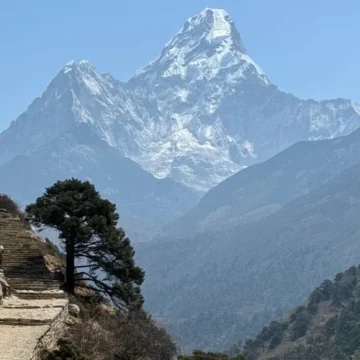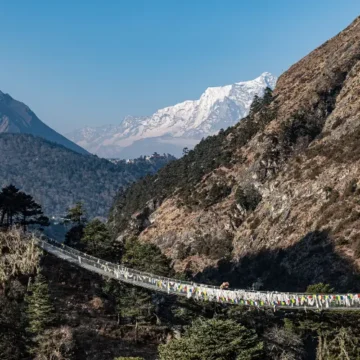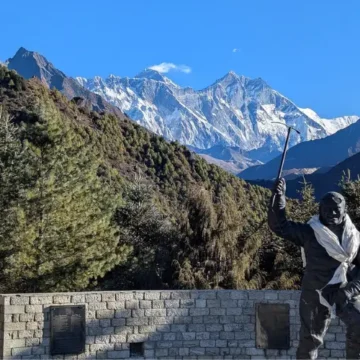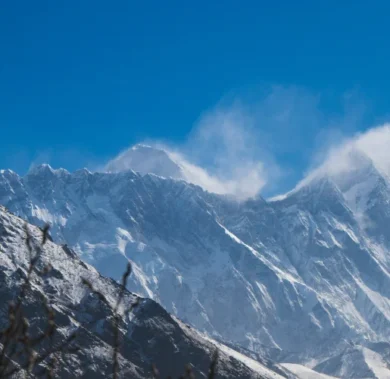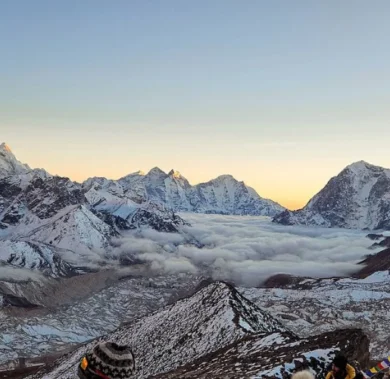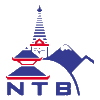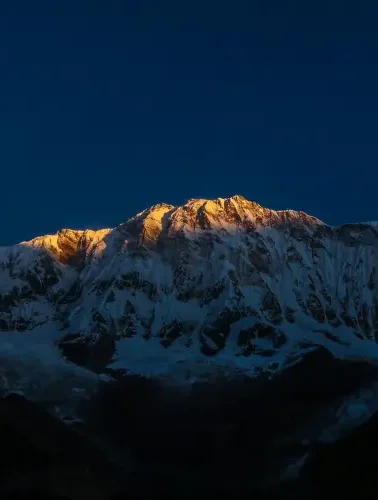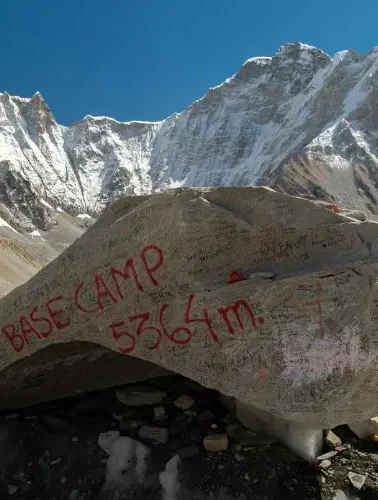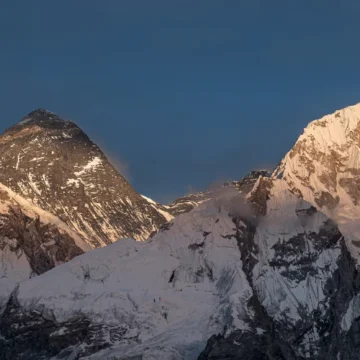
Best time to hike Everest base camp - [Archived]
Table of Contents
Everest Base Camp has been a dream destination for many trekkers all around the world. Thousands of people love to trek Everest Base Camp. But a question arises in many people’s minds: “When to Do Everest Base Camp Trek?” This article will give you detailed information on the best time for Everest Base Camp. From the seasons to the weather and temperature of the base camp, we will provide you with every detail possible.
The altitude of Everest Base camp is 5364 meters. That’s a lot. The Everest base camp treks have many things to offer the trekkers. You can have a view of the highest peak in the world, Mount Everest. Trekkers can immerse themselves in the panoramic view from the Everest base camp. You can have a 360-degree view of Mount Lotshe, Nuptshe, Ama Dablam, and majorly Mount Everest.
More than 40,000 people are said to have done the Everest Base Camp Trek. Travel and hiking enthusiasts love this exhilarating trek in Nepal.
When to Do the Everest Base Camp Trek?
The Everest base camp trek is achievable to do during every season and month, too. However, the pros and cons of every month and every season can be found. Trekkers from around the globe come to see the Everest Mountain Base Camp. The most important factor that largely determines a trek to Everest Base Camp is the area’s climate and seasons. Nepal experiences four distinct seasons: spring, summer (monsoon), autumn, and winter. Every season is like a surprise package for trekkers.
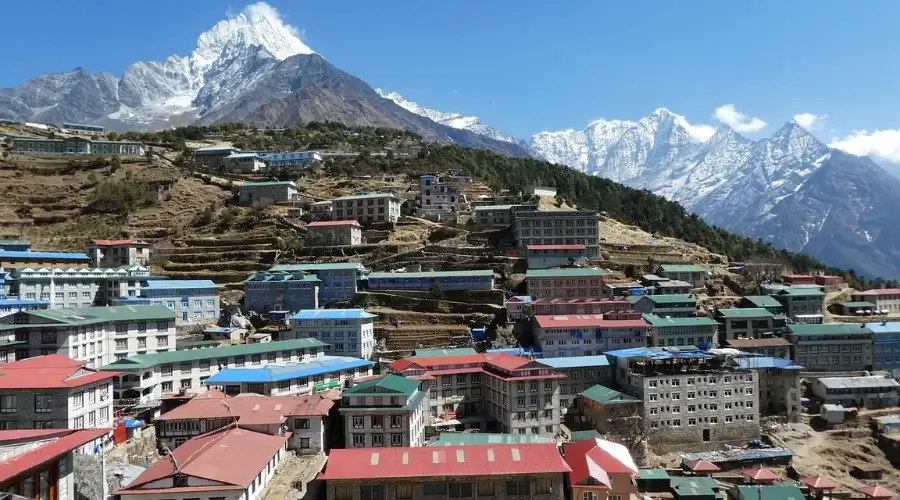
Spring is the peak season for Everest base camp trekking from March to May. The weather is usually pleasant at this time of the year, and the sky is clear. We, therefore, have a chance to bask in the amazing views of the surrounding mountains. The forests burst into flower blossoms, bringing colour to the scenery and making it an enjoyable atmosphere for those who like nature and those who love photography. The temperatures grow warmer, and the snow-covered trails are now accessible during the spring’s gradual start.
In Nepal, monsoon summer, which lasts from June to August, welcomes the rainy season. Despite this period being hard for trekking with heavy rainfalls and landslides, people can still go trekking to the Everest Base Camp. Despite this, trekkers should have raincoats, waterproof shoes, and goggles to avoid wet days and poor visibility caused by clouds or fog. The hanging vines and fewer people in the area can make for an unusual but altogether charming experience, especially for those who desire a change of view of the region.
September to November is the autumn season and is believed to be the best time for Everest Base Camp. The weather condition is calm with clear sky and cool weather which makes it the best this of trekking. The paths are dry, with a few stumbles along the way, yet they are still excellent, and travellers may be able to view the Himalayas from the top. Another thing to mention is that during the autumn months, when there are Dashain and Tihar celebrations, trekking undergoes an increase in cultural richness. This is the best Season for Everest Base Camp Trek; hence, trekkers are highest during this season. Booking teahouses and permits in advance is key.
Winter is the cold season from December to February, and there may also be a lot of snowfall in the Everest Region. If one trek during this time, the trails will be less crowded; trekking over winter is challenging. Challenges come with freezing temperatures and the possibility of snow-covered trails, especially at higher elevations.
Temperature and weather of Everest Base Camp
The temperature and weather conditions of Everest Base Camp are highly variable due to being situated at a high altitude. The heat at Everest Base Camp fluctuates a lot, with seasons and time of day being the main factors. The temperature of the Everest camp varies from subzero to moderate, ranging from the coldest in the winter months of December to February to the warmest in the summer months of June to August.
Sometimes, temperatures in the summertime can reach 20 degrees Celsius at the day and can drop to -20 degrees Celsius or even below freezing at night, mainly in winter months. Hikers should be ready for these extreme changes in temperature by wearing layers of clothing and taking an adequate set of equipment.
Weather can also be unstable at base camp, and a change in weather can happen in a few minutes. Nepal experiences four distinct seasons: spring, summer(monsoon), autumn, and winter.
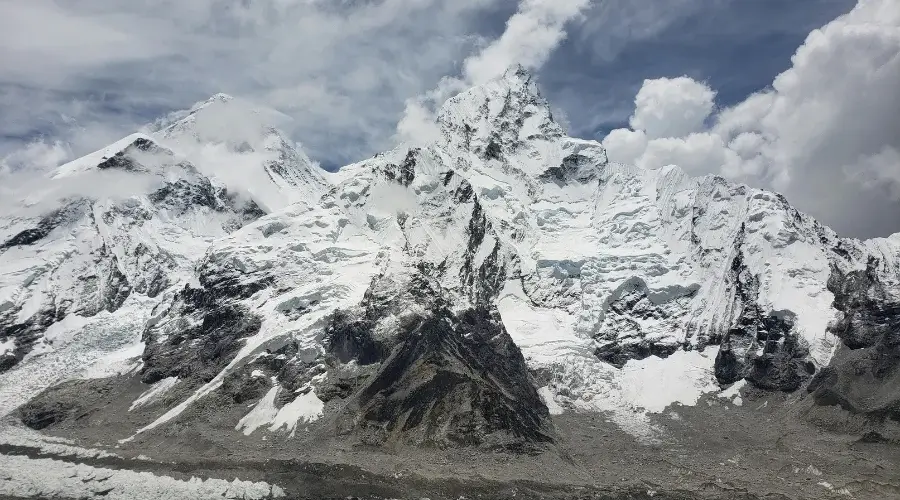
Spring and autumn are the best seasons to tour Everest Base Camp because the weather is good, and you are likely to see clear skies and temperatures that are not too high. Yet, trekkers must be mindful of the potential for abrupt weather conditions, such as snowfall and strong winds, particularly at higher altitudes.
In the summer, the monsoon hits the area; heavy rains with drizzle and overcast skies characterize it. This period can be hard to cover due to wet and muddy trails with low visibility.
December is the coldest month at EBC, with subzero temperatures and occasional snow storms. Even the coldness of winter trekking can show the beauty of a white forest while getting fewer crowds.
Best Time to Hike Base Camp Everest
We have already mentioned about when Is the Best Time to Hike Everest Base Camp. So here we will discuss the best time of year to do Everest base camp and the pros and cons of every season. Many of the trekkers do not have detailed information about the best time for Everest Base Camp. But don’t worry we will tell you about the Mount Everest base Camp trek best time of year.
Spring (March to May)
March in Everest Base camp:
March begins with warmer temperatures melting the winter snow, making it easier to trek. The rhododendron forests start blooming, adding vibrant colours to the landscape. March is the best time for Everest base camp.
April in Everest Base camp:
April is also considered one of the best times to visit Everest base camp. This season offers beautiful scenery and blooming flowers. The skies are clear, and the weather is very nice.
May in Everest Base Camp:
The Spring in Nepal peaks in May. It has mild temperatures and blooming flowers along the Everest base Camp trail. It’s an excellent time for nature lovers and photographers to capture the beauty of the Everest region.
Pros of trekking Everest in Spring:
- The temperatures are mild, which will help you trek comfortably.
- You can enjoy the rhododendrons blooms along the trail.
- Clear skies offer breathtaking views of the Everest region of Nepal.
Cons of trekking Everest in Spring:
- The Everest base camp trail can be crowded because of the peak season.
- Accommodation and permits may be in high demand.
- Weather can be unexpected, with occasional rain or snow.
Summer (June to August)
June in Everest Base camp:
June in Nepal indicates the beginning of the summer season. Summer brings rain, so there is a chance of encountering rain on the Everest base camp route. Besides the rain, you will find lush green forests and trails. The weather and climate of June in Everest is moderate.
July in Everest Base camp:
Monsoon peaks in July in Nepal. It brings heavy rainfall and an increased risk of landslides. Trekking during this month can be challenging due to muddy and slippery trails. You need to be extra careful during July in Everest.
August in Everest Base camp:
The monsoon begins in August and ends in September. However, occasional rainfall and cloudy weather persist. The trails are less crowded, offering a quieter trekking experience.
Pros of trekking Everest in Summer:
- You will find Lush greenery along the trails, which creates a refreshing atmosphere.
- The crowd is reduced as it is monsoon season in Nepal.
- Accommodation may be more readily available.
Cons of trekking Everest in Summer:
- Heavy rainfall and landslides can make trekking hazardous.
- The views of the region can be obstructed due to
- Trails can be muddy and slippery, increasing the risk of accidents.
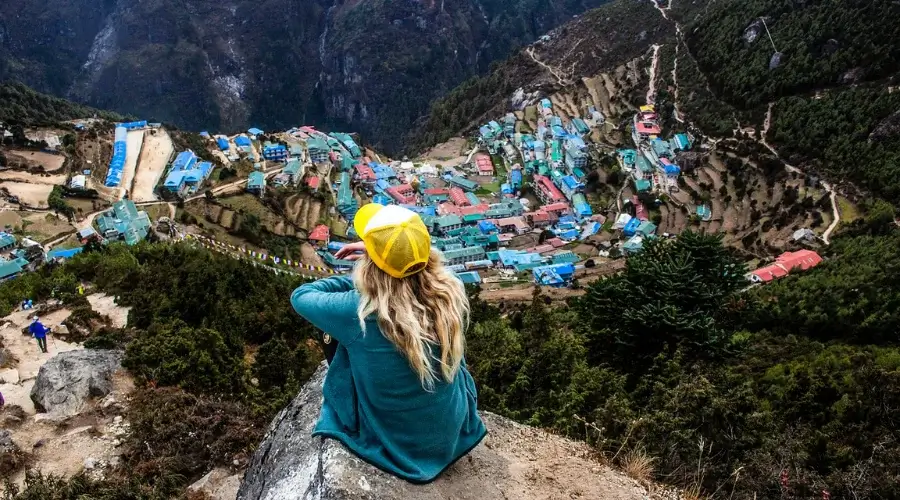
Autumn (September to November)
September in Everest Base camp:
Autumn begins with stable weather and clear skies. Autumn in Everest offers excellent trekking conditions. September is the beginning of the festive season in Nepal. The major festivals of Nepal, like Dashain and Tihar, fall during September.
October in Everest Base camp:
October in Nepal is considered the peak trekking season of Everest. It has stable weather and stunning views of the Himalayas. The EBC routes are dry and well-defined, making trekking easier.
November in Everest Base camp:
November in Nepal ends with mild temperatures and clear skies. It is perfect for enjoying the beauty of the Everest region without the crowds of peak season.
Pros of trekking Everest in Autumn:
- The weather is perfect for trekkers.
- It is the festive atmosphere during Dashain and Tihar.
- Dry and well-defined trails make trekking easier.
Cons of trekking Everest in Autumn:
- It is the peak season, which means a higher number of trekkers, leading to crowded trails.
- Accommodation and permits may be more expensive because of the peak season.
- Weather can still be cold at higher elevations.
Winter (December to February)
December in Everest Base camp:
Winter brings cold temperatures and few snowfall to the Everest region. Despite the cold, the trails are quieter. December has solitude and serene views of the snow-capped peaks. But you must be prepared for the freezing cold temperature and weather.
January in Everest Base camp:
January is the coldest month of the year, with freezing temperatures and snow-covered trails. However, winter trekking can offer a unique and tranquil experience for those prepared for the cold. Please bring extra warm clothes for the cold.
February in Everest Base camp:
Winter begins to decrease in February in Nepal, with slightly warmer temperatures and clearer skies. It’s a good time for those seeking a quieter trekking experience away from the crowds.
Pros of trekking Everest in Winter:
- Quieter trails offer solitude and tranquillity.
- Serene views of snow-capped peaks.
- Accommodation and permits may be more readily available.
Cons of trekking Everest in Winter:
- Freezing temperatures can be challenging for some trekkers.
- Snow-covered trails require extra caution and proper gear.
- Limited services and facilities may be available in remote areas.
What can you expect in each season at Everest? Accommodation, paths, and crowds.
Spring in Everest Base Camp:
In the spring season, visitors can enjoy moderate temperatures, making this a wonderful time to visit the Everest Base Camp trek. The trail begins to be dotted with riotously bloomed areas of flowering rhododendrons, and these impart brilliant colours to the surroundings. We have trials that are mostly cleared of snow, although you might meet some muddy turfs from thawed snow along the way.
Along the trail, teahouses and lodges are prevalent and less occupied in the shoulder season compared to the traditional autumn season, which is the high season. On the other hand, spring offers an opportunity to witness the unique charm of the hikes. However, given the season’s popularity, chances are teahouses, particularly popular ones, will fill up quickly, and booking in advance remains advisable.
Summer in Everest Base Camp:
During summer, Nepal is under the control of the monsoon season, which often becomes one of the obstacles to trekking to the Everest Base Camp. Distributed tenancy opportunities nearby still stay intact, yet a drastically significant note is the reduced number of walkers compared to other periods.
Due to the prevalent rainfall, the path is often muddy and sometimes slippery, adding difficulty to trekking. In contrast, the trees between the trails and the calmer environment dispel the rainy feeling, and brave walkers have a chance to experience nature differently.
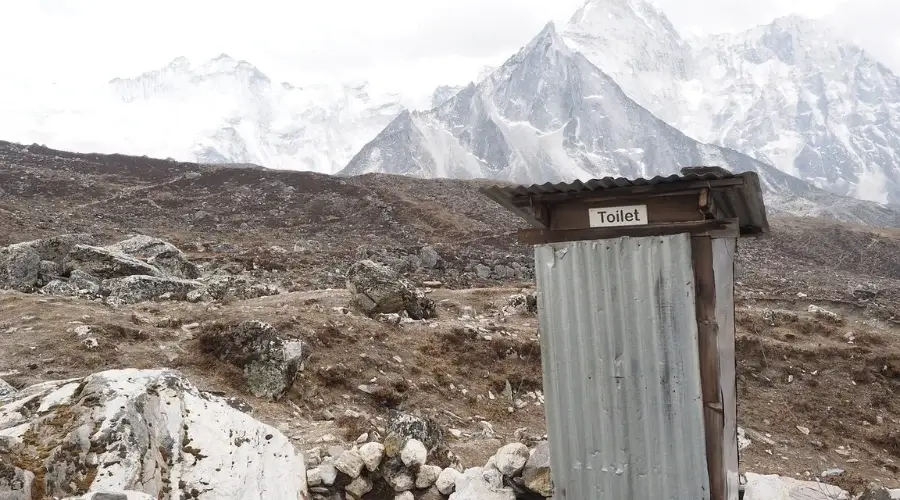
Autumn in Everest Base Camp:
Hiking to Everest Base Camp during autumn is generally the Best Time to Visit. The weather is perfect, with a stable and clear sky and a comfortably warm temperature, which makes trekking a great experience. The availability of accommodation in the area, especially the tea houses, is not in doubt; however, they tend to be frequently occupied during peak season.
The trails are marked and technically navigable, which is facilitated by dry conditions, so the walk is a pleasure. Autumn is undoubtedly the busiest season for trekking in the Everest region, and thus, one needs to be aware of the crowded trails and fierce competition for accommodation and permits. Do book everything in advance to lock your seats in place.
Winter in Everest Base Camp:
Winter brings cold weather and, at times, snowfalls to the Everest region. Tea houses and lodges in the area are closed during this time because adverse conditions prohibit many similar businesses from operating.
The trails may be icy and snow-covered, so we must be well-prepared and equip ourselves with adequate gear. While it is surely not for everyone, for adventurous souls who dare to brave the cold, winter trekking has within itself the blessings of solitude and the awe-inspiring spectacle of the snow-bound peaks. It is crucial to be well know of the incoming storm conditions and to repeatedly check the weather forecast if you plan to travel in winter.
What is the peak season of Everest Base Camp?
The peak season of trekking to Everest Base Camp is generally from late September to November and from late March to May. During these times, the weather is fairly stable, with clear skies and mild temperatures, making it perfect for trekking. The trails are also busy with trekkers from around the world, creating a lively atmosphere along the route. This is the Best Time for Everest Base Camp.
You can also add Island peak, Mera Peak, and Lobuche East Peak Climbing to your itinerary if you are a mountain climber.
How can I trek to Everest Base Camp?
You have various options to go for Everest Base camp Trek. Some best ways are here below:
1. A flight to Lukla and then start your trek.
2. Everest Base Camp Trek from Jiri.
Want to know more?
Speak to an Expert





Sandip Dhungana
Nepal 🇳🇵
Whatsapp: +977-9823636377

![Best time to hike Everest base camp - [Archived]](https://himalayan-masters.com/wp-content/uploads/2024/04/Untitled-design-93-1.webp)

